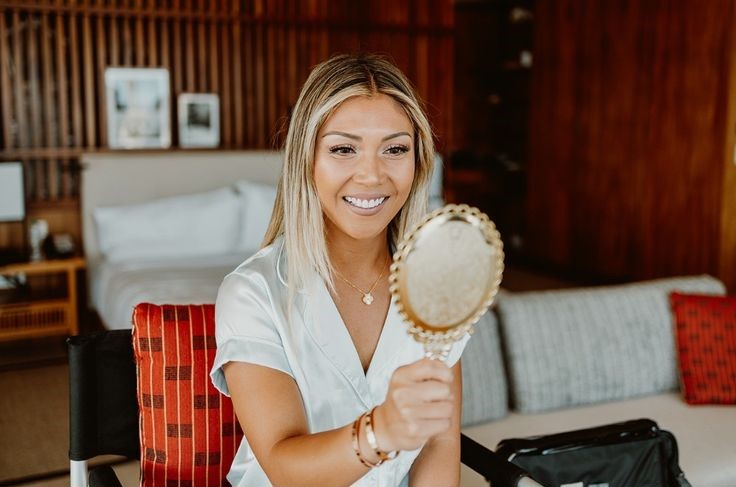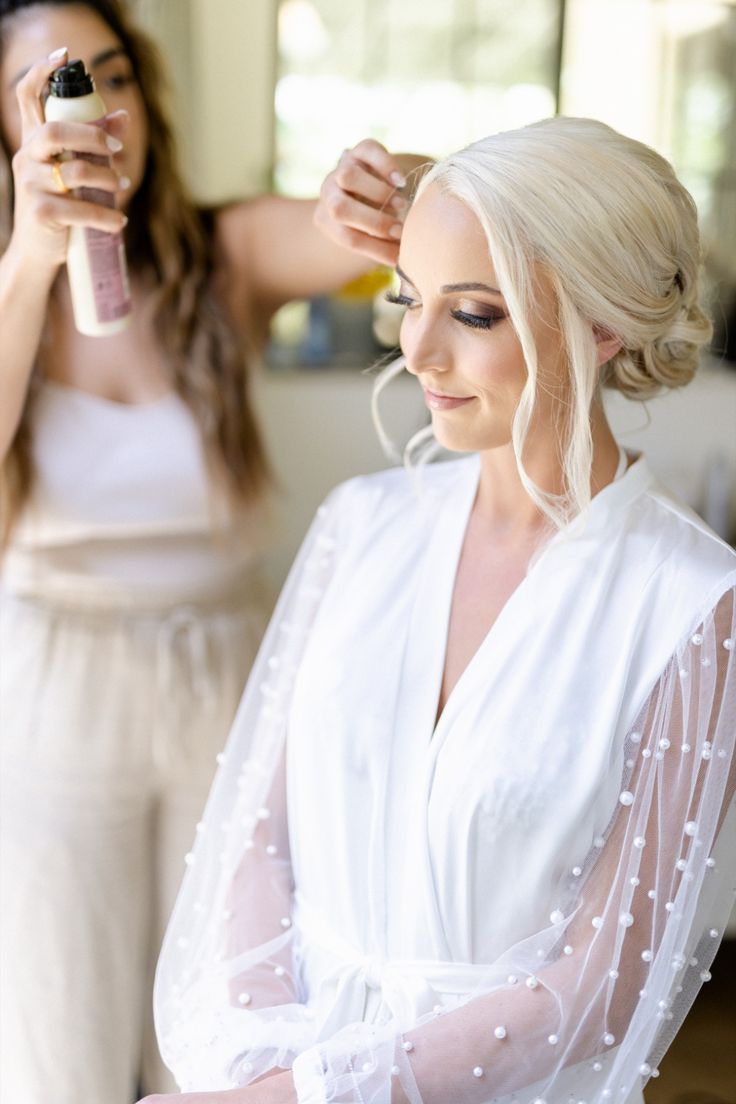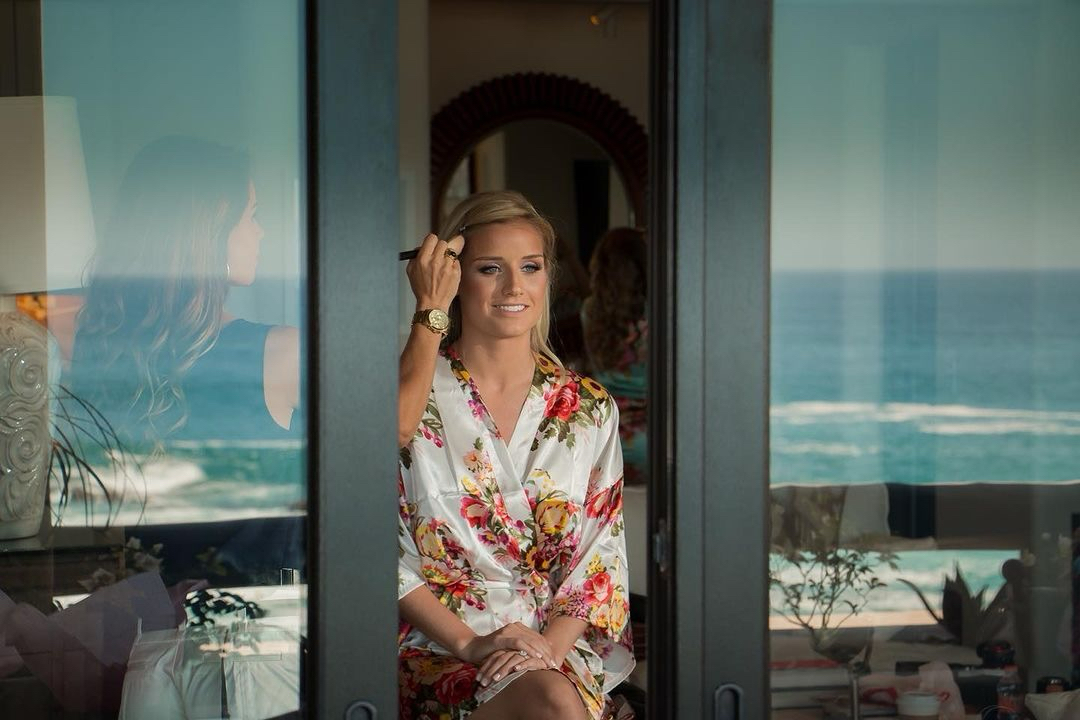What causes hair to turn grey? Can hair loss be controlled? How is natural hair color determined? Schwarzkopf answers all of these questions for you:
-
Hair Colour
Pigments in the hair follicles give our hair its natural colour. They are produced inside specialised pigment cells and from there the pigments travel through tiny channels to the keratinocytes, thus inundating the entire hair with colour. In general, dark-haired people have a higher concentration of pigments in their hair than blondes.
-
Cuticle Layer
The cuticle layer forms the outermost lining of the hair. It consists of a single layer of scale-like overlapping keratinocytes. The condition of this outer layer indicates the state of the hair’s health. In the optimal case, flat keratinocyte scales are tiled smoothly around the cortex and protect the inside of the hair shaft against damaging influences from the outside. Intact cuticle layers around the hair form a smooth, light-reflecting structure. Beautiful lustre therefore indicates healthy hair.
In contrast, the cuticle layer of stressed hair (due to bleaching, perming and frequent hot blow-drying) is disorganised and rough. Under these conditions, damaging substances can easily penetrate into the hair cortex. As a result, the entire head of hair looks brittle, dull and shaggy. Intensive hair treatments and conditioning rinses restore the smooth structure of the cuticle layer.
-
Hair Cycle
Individual hairs go through a sequence of developmental phases. Most hairs (about 8 of 10 hairs) are in the growth phase (anagen phase). In this phase the new hair root is generated and the hair grows. This phase lasts between two and seven years. A two to three week long transitional phase follows (catagen phase). In this phase, the cell production in the follicle stops temporarily, the follicle constricts and the hair falls out. Approximately one per cent of the follicles are in this transitional (catagen) phase. In the following resting phase (telogen phase), the hair follicle regenerates, the cells start to divide again and a new hair starts to form. About 10 to 20 {394ba9b977cdb97484e9e35f39db822ee8275a3caece20bc8b8378ea68910770} of all hairs are in this phase, which lasts about two to four months.
-
Dandruff
Dandruff shows up when the scalp sheds dead skin cells prematurely and in excessive numbers. This can happen whether the scalp is dry or fatty. Different conditions may cause dandruff, such as stress, improper nutrition, hormonal changes as well as dry heated air, frequent blow-drying or aggressive shampoos. Remedies are anti-dandruff shampoos with active ingredients like Octopirox or zinc pyrithione.
-
Hair Follicles
The hair follicle is a slanted invagination in the scalp, in which the individual hair is anchored. The hair shafts form inside these follicles. Sebaceous glands end in the upper part of the follicles. They provide the hair and scalp with sebum. With the help of proper care products grey hair can look fabulous.
Grey Hair
Grey hair is not really grey but rather a mixture of colourless and pigmented hair. The mixture appears grey. Hair turns white when the pigment cells reduce their melanin synthesis. In some people, this process starts very early and very late in others. Genetic factors determine when the first white hairs appear.

Growth
Hair grows 0.3 to 0.45 mm per day or 1 to 1.2 cm per months. (1 cm is equivalent to 0.4’’.) It is practically impossible to influence the hair growth from the outside. The maximum hair length ranges between 40 and 80 cm (between 16 and 32’’).
- Keratin
Keratin gives structure to hair and nails. The main component of hair (and nails) is keratin, a very elastic protein.

Life Span of Hair
On average, a hair remains in the scalp for six to eight years before it falls out. The individual life span depends on genetic factors. In cases of severe hair loss, the life span of hair may be reduced to three or four years.
-
Hair Loss
Losing 30 to 100 hairs per day is normal. Several conditions can result in losing more than the maximum of 100 hairs per day. In about 95 {394ba9b977cdb97484e9e35f39db822ee8275a3caece20bc8b8378ea68910770} of all cases of both male and female hair loss, genetic factors are to blame. Due to the overproduction of male hormones (androgens), the blood supply to the hair follicles is reduced and in turn, the hair is no longer tightly anchored in the scalp.
-
Melanin
The skin pigment melanin also occurs inside the keratin fibres of the hair. The amount of melanin determines how light or dark the hair is. As people age, the melanin production slows down and the hair turns grey or white. There are two types of melanin, the larger brownish black eumelanin pigments and considerably smaller reddish yellow pheomelanin pigments. All existing human hair colours are composed of these two pigment types.
-
Hair Quality
Our genetic make-up decides whether we have thick or thin hair. Europeans consider hair with a diameter of 0.04 to 0.06 mm as thin, hair with a diameter between 0.06 and 0.08 mm as normal, and hair with a diameter between 0.08 and 0.1 mm as thick. By comparison with European hair, Asian hair is significantly thicker. The average diameter of Asian hair is 0.08 to 0.12 mm. European hair has a somewhat elliptical shape, while Asian hair is rounder and more elastic. (1mm is equivalent to 0.039’’, i. e. about 4 hundredth of an inch.)
-
Scalp
The skin on the scalp resembles the rest of the skin and it is equally sensitive. Despite the hair, the scalp can get sunburned. Cold, heat and other conditions may dry out the scalp and cause itching and/or dandruff. For a variety of reasons, the sebaceous glands in the scalp may produce excessive amounts of sebum and lead to a fatty scalp.
-
Sebum
Sebaceous glands exist almost everywhere in the skin, including the scalp. These glands produce the fat, which protects the scalp and hair from drying out. The sebum synthesis may be out of kilter ever now and then due to genetic predisposition, stress or hormonal changes. This may result in a fatty scalp and fatty hair or to a very dry scalp. Either condition may lead to bothersome scalp conditions with itching, redness or dandruff.

Split Ends
Long hair frequently shows split ends. In most instances, this is caused by mechanical stress like combing, brushing or bouncing off the shoulder. Frequent colouring, bleaching, perming or using heated styling tools may also lead to split ends. Split-end fluids can be used to coat the split ends with a whisper-thin silicone film to improve the appearance of the hair at least for a while. Otherwise, a haircut is the only effective solution.
Strength
A single hair is able to hold at least 100 g weight without breakage. That brings the combined bearing capacity of all hairs on the average scalp to at least ten tons.
-
Structure – The Way Hair is Built
Hair consists to roughly 80 {394ba9b977cdb97484e9e35f39db822ee8275a3caece20bc8b8378ea68910770} of keratin (protein), 10 to 15 {394ba9b977cdb97484e9e35f39db822ee8275a3caece20bc8b8378ea68910770} is water and the remaining 5 to 10 {394ba9b977cdb97484e9e35f39db822ee8275a3caece20bc8b8378ea68910770} are pigments, minerals and lipids. The cuticle layer forms the outer layer of every hair. The cuticle layer envelops the inner part of the hair shaft called the hair cortex. The cortex comprises about 80 {394ba9b977cdb97484e9e35f39db822ee8275a3caece20bc8b8378ea68910770} of the hair mass. Colouring, bleaching or perming takes place inside the hair cortex.
-
Hair Volume
How many hairs a person has on average depends on the hair colour. With 150,000 hairs blondes have the most hairs. Black-haired people come in second with about 110,000 hairs, followed by brunettes with 100,000 hairs and redheads with 80,000 hairs.
What questions do you have about hair?





